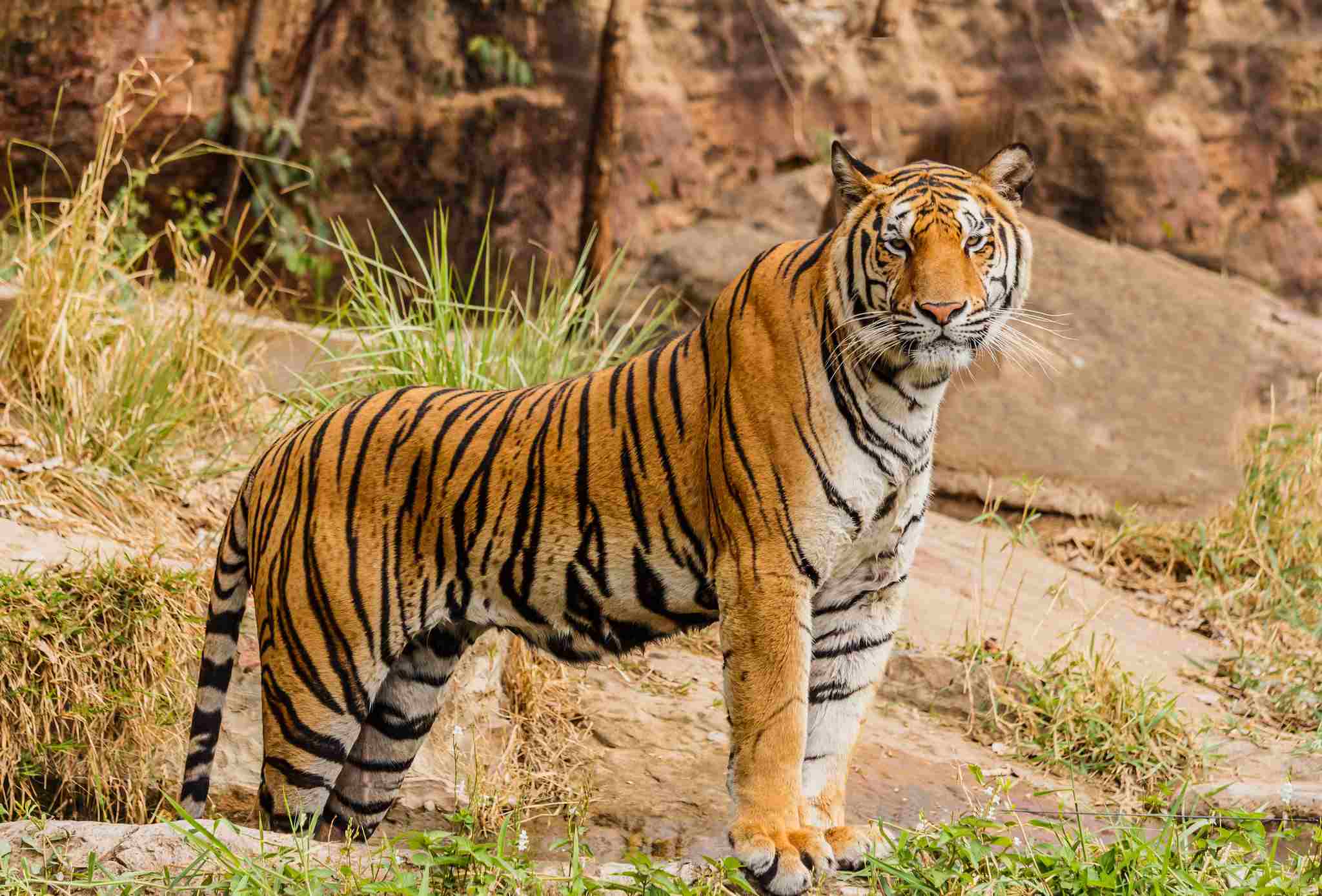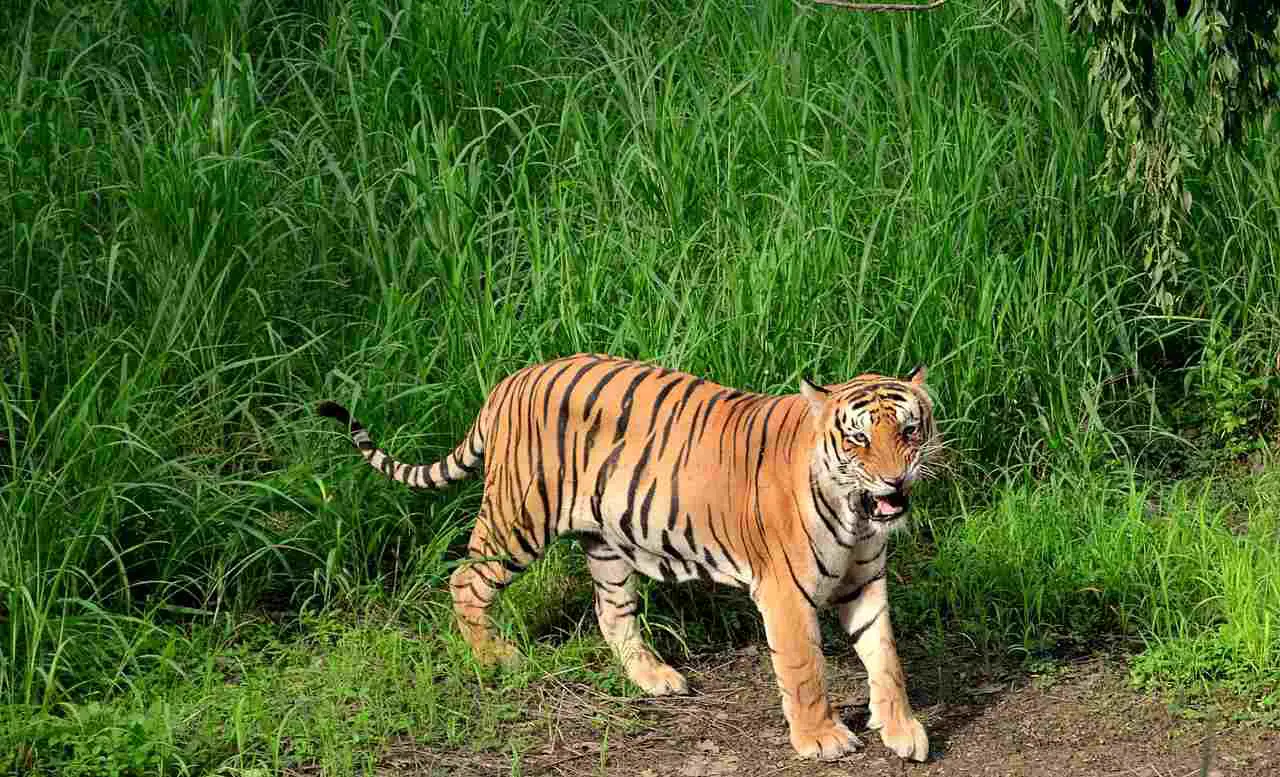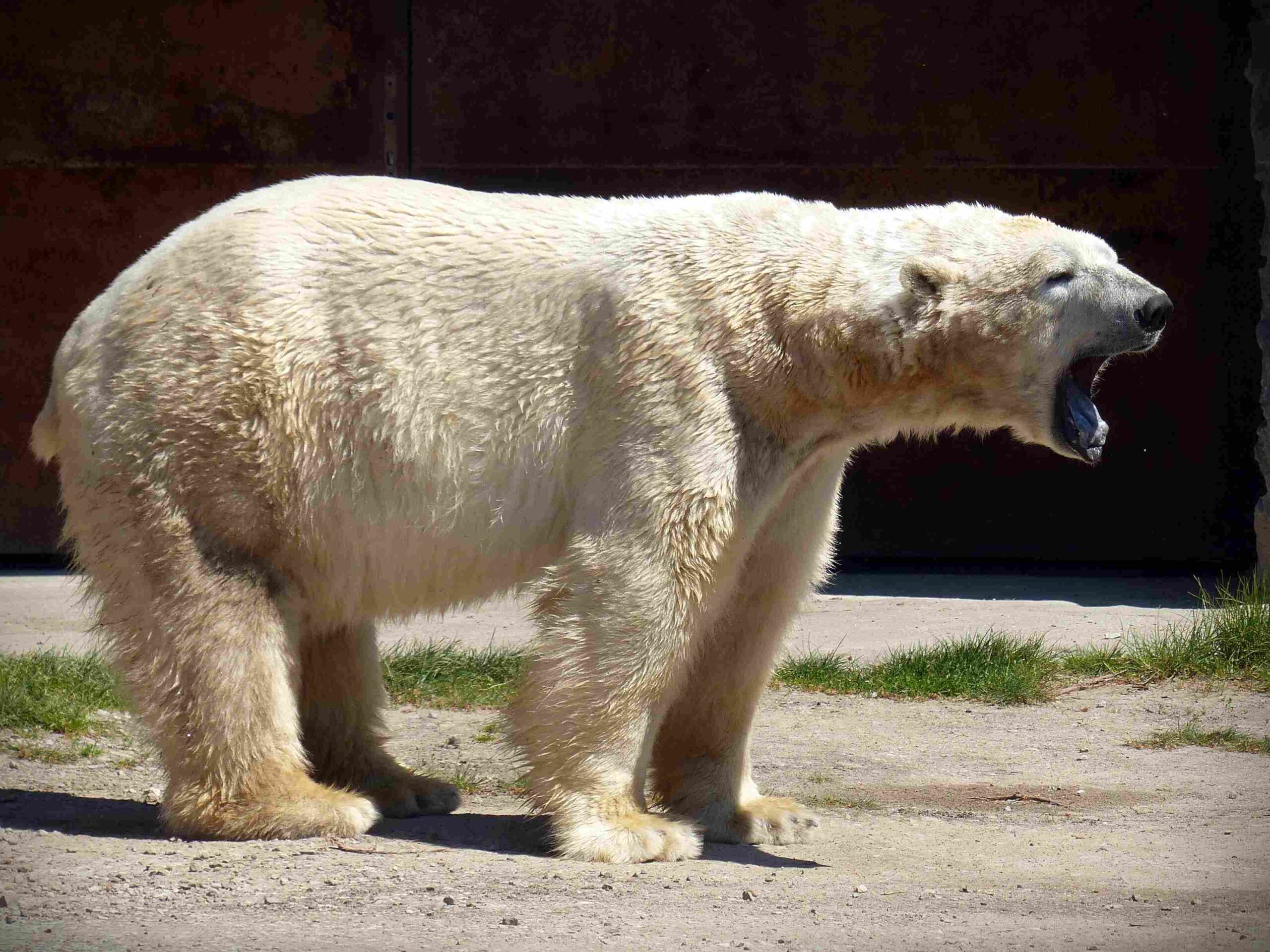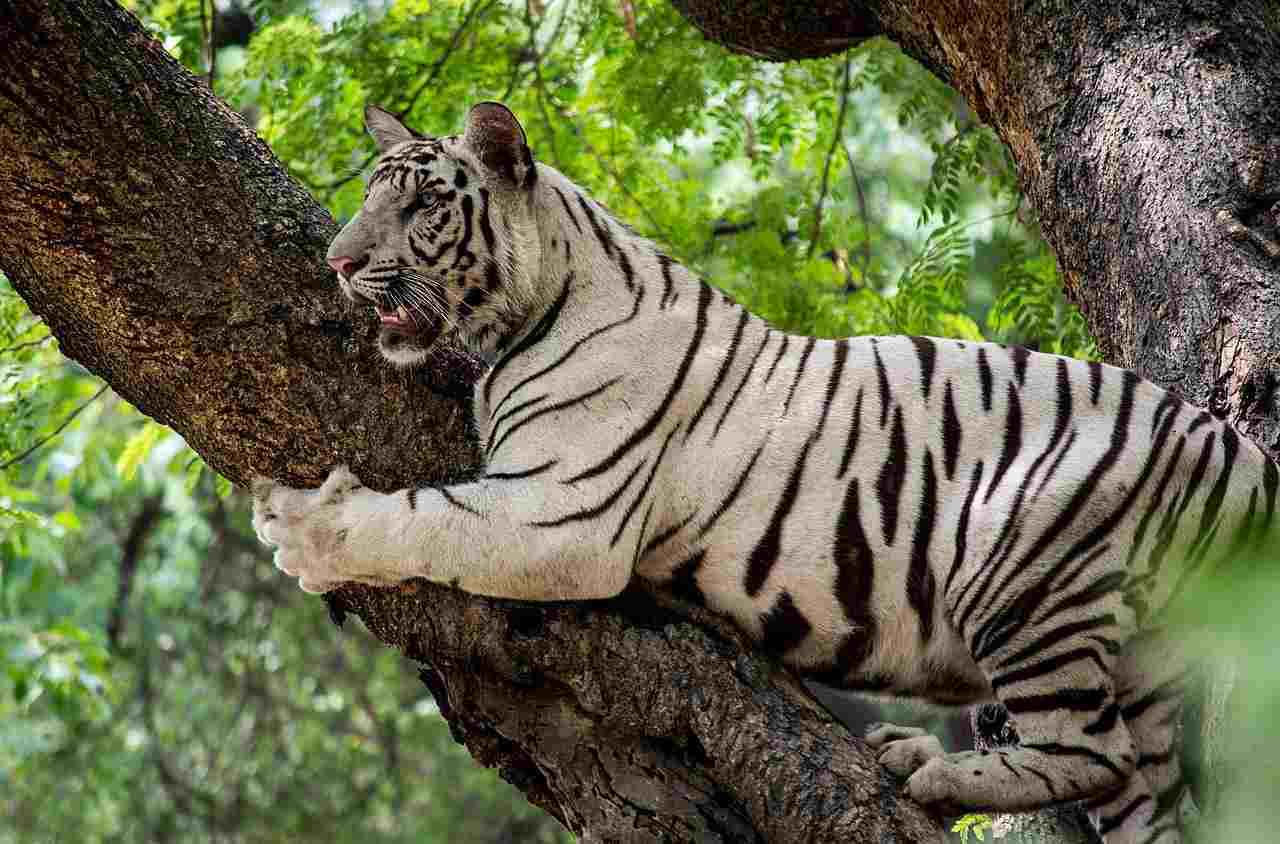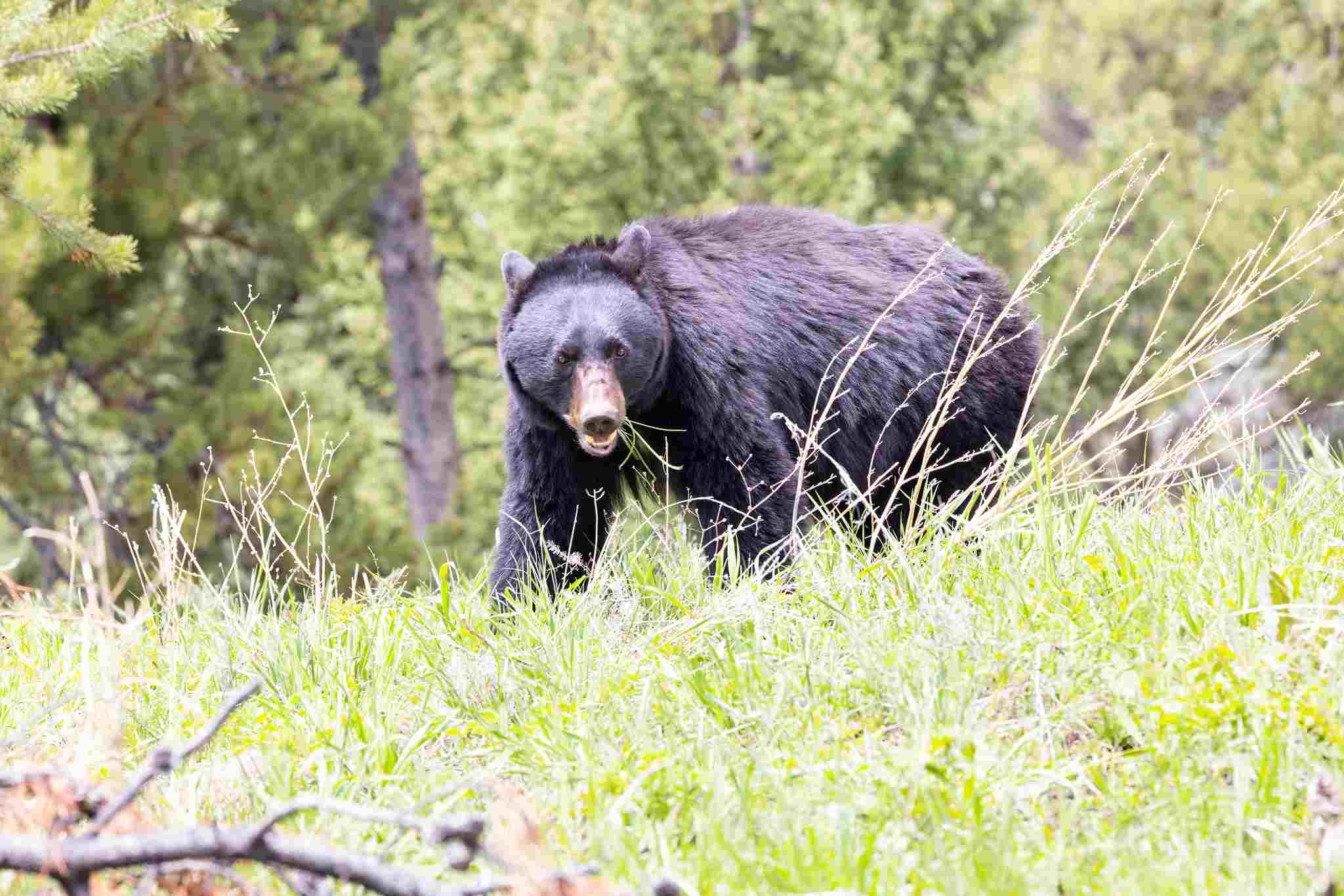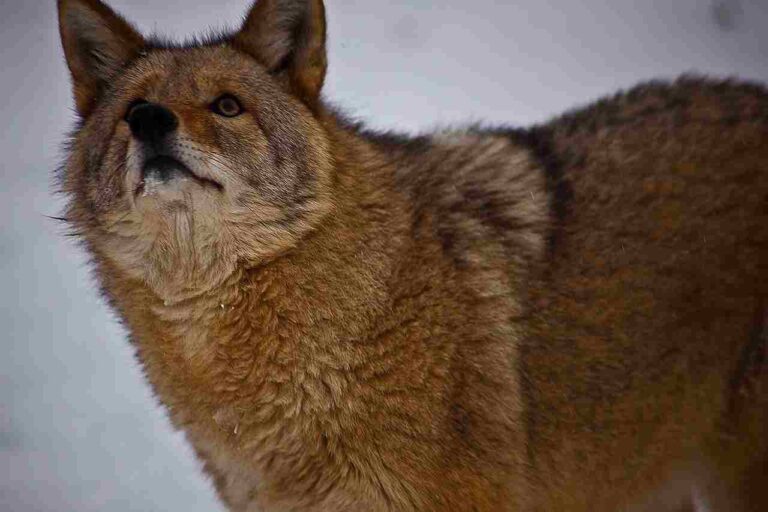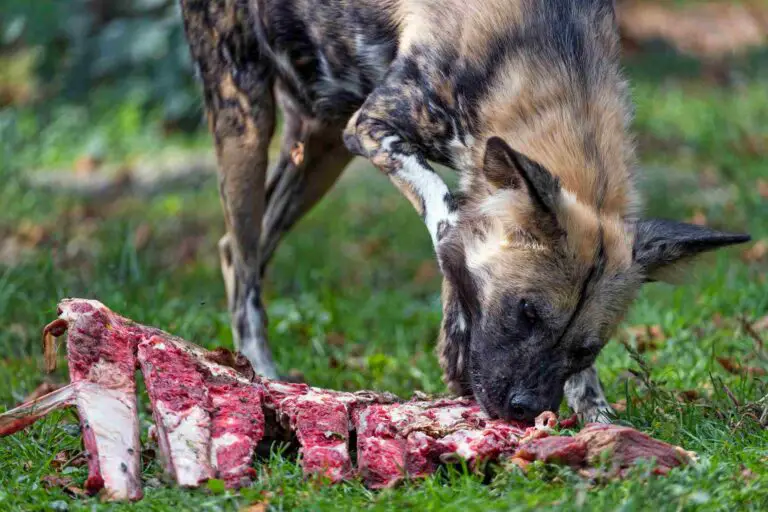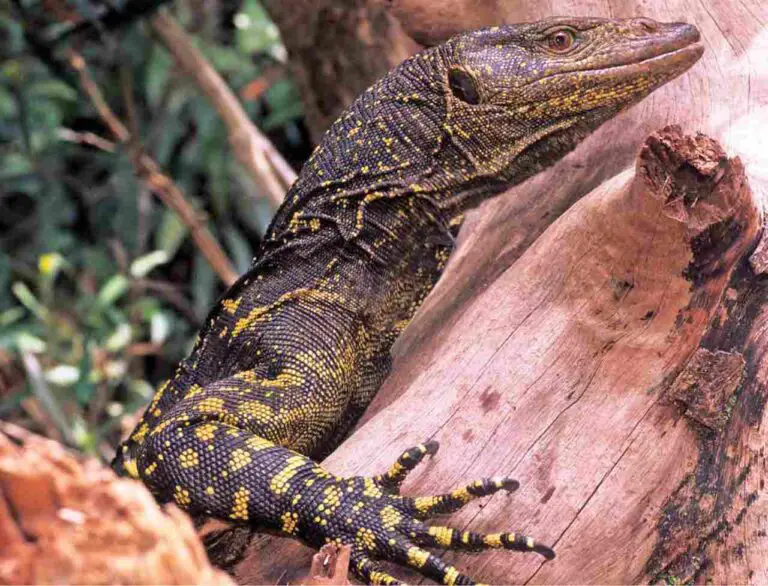Polar Bear Vs Tiger Size, Weight, and Predatory Comparison
The physical comparison between polar bears and tigers encompasses various aspects such as size, weight, skeletal anatomy, mode of locomotion, speed, agility, relative strength and endurance, bite force, and attack and defense methods. Each of these factors contributes to understanding the unique characteristics and capabilities of these apex predators.
Key Outcomes of Comparison
When comparing the polar bear and the tiger, it is evident that the outcome of a confrontation between the two would heavily favor the polar bear. This is primarily due to the polar bear’s larger size, greater weight, superior strength, and powerful bite force.
* However, it is important to note that the tiger, with its agility and speed, may still be able to inflict significant damage on the polar bear before ultimately being killed.
* The environment in which these animals reside also plays a role in determining the outcome of a confrontation. The tundra, which is the natural habitat of the polar bear, provides favorable conditions for its survival and hunting. On the other hand, the forested areas where tigers are found offer advantages for their agility and stealthy hunting techniques.
* In terms of taxonomic classification, the polar bear belongs to the family Ursidae, while the tiger belongs to the family Felidae. Despite their different classifications, both animals share certain similarities in terms of size and weight. The polar bear is known to be the largest species of bear, while the tiger is one of the largest species of big cats.
* When comparing the agility and attack/defense capabilities of the polar bear and the tiger, it becomes clear that the tiger has the advantage. Tigers are known for their agility, speed, and ability to quickly maneuver in dense forests. In contrast, polar bears are better adapted for swimming and hunting on sea ice.
*Physical Comparison
1). Size
When comparing the size of polar bears and tigers, several factors come into play. One of the key measurements is average height, which refers to the distance from the ground to the shoulder. Another important aspect is the total body length, which includes the head and body, but not the tail.
In terms of average height, polar bears are generally taller than tigers. They can reach heights of up to 4.5 feet (1.4 meters) at the shoulder, making them one of the largest land predators. On the other hand, tigers have an average shoulder height of around 3.3 feet (1 meter).
When considering total body length, polar bears also have the advantage. They can measure between 7.25 to 8 feet (2.2 to 2.5 meters) from nose to tail. Tigers, on the other hand, have a total body length ranging from 6 to 9 feet (1.8 to 2.7 meters), depending on the subspecies.
Therefore, when comparing the size of polar bears and tigers, polar bears are generally larger in terms of average height and total body length. However, it’s important to note that individual variations can occur within each species.
2). Weight
When comparing the weight of polar bears and tigers, it is important to consider the average weight of both males and females.
Male polar bears are generally heavier than male tigers. On average, male polar bears can weigh between 900 to 1,600 pounds (408 to 725 kilograms). In contrast, male tigers typically weigh between 400 to 700 pounds (181 to 318 kilograms).
The weight difference between female polar bears and female tigers is not as significant. Female polar bears usually weigh between 330 to 650 pounds (150 to 295 kilograms), while female tigers weigh around 220 to 370 pounds (100 to 168 kilograms).
Overall, polar bears are heavier than tigers, regardless of gender. This weight advantage is due to the polar bear’s adaptation to its Arctic environment, where it needs to store fat for insulation and energy reserves. Tigers, on the other hand, have a more slender build, which allows them to be agile and swift hunters in their forest habitats.
It is important to note that these weight ranges are averages, and individual variations can occur within each species. Factors such as age, health, and availability of prey can also influence the weight of both polar bears and tigers.
Therefore, when comparing the weight of polar bears and tigers, polar bears are generally heavier, especially the males. This weight difference is a result of their respective adaptations to their unique environments.
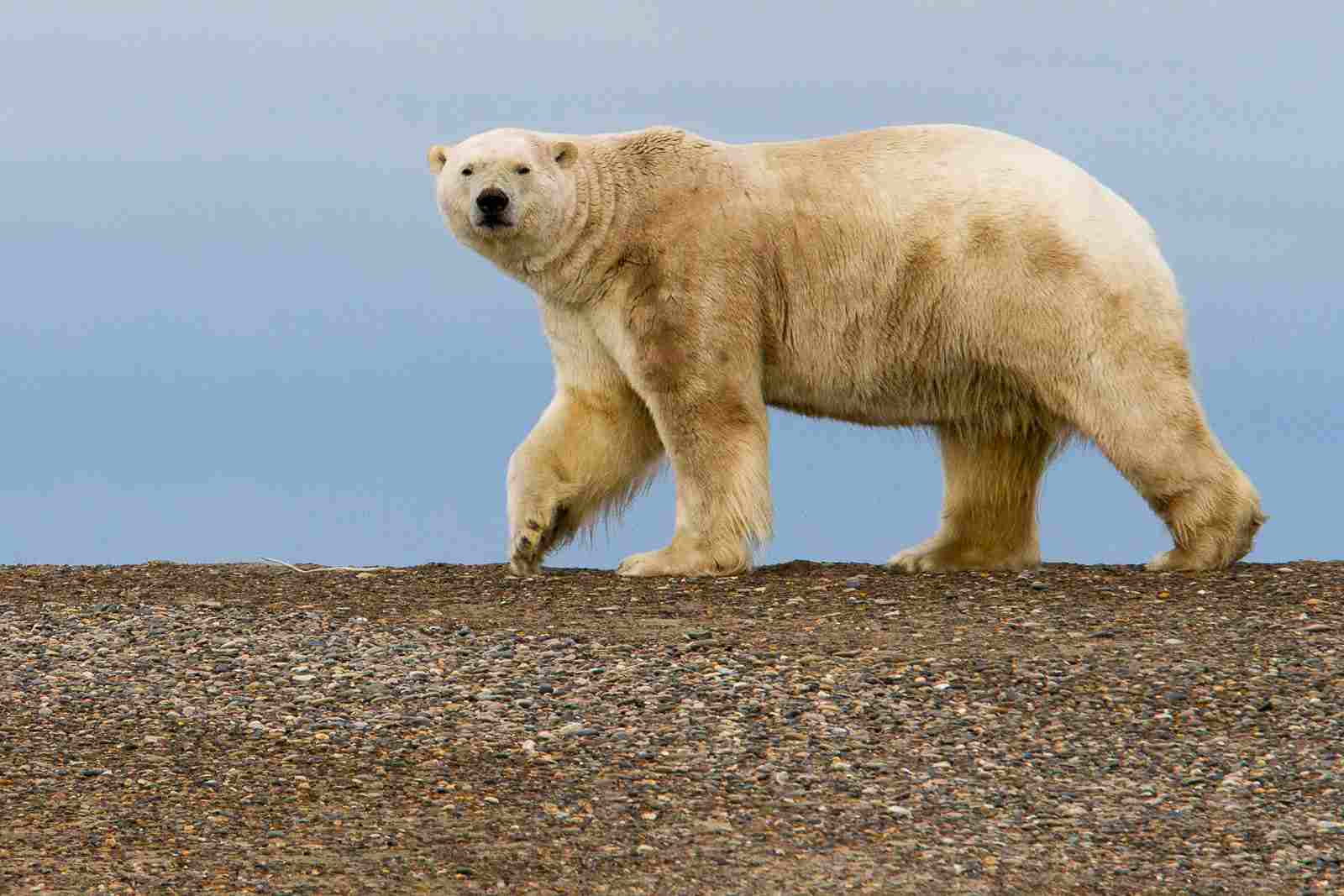
3). Skeletal Anatomy
When comparing the skeletal anatomy of polar bears and tigers, there are notable differences in their bone structure and density.
Polar bears have a robust skeletal structure, with strong bones that are adapted to their Arctic environment. Their bones are dense and well-suited for supporting their massive size and weight. This skeletal adaptation allows polar bears to navigate the icy terrain and swim in the freezing waters with ease.
On the other hand, tigers have a more agile and flexible skeletal structure. Their bones are lighter and more slender, enabling them to move swiftly and gracefully through their forest habitats. This skeletal adaptation allows tigers to climb trees, leap long distances, and pounce on their prey with precision.
In terms of specific skeletal features, polar bears have large and powerful forelimbs, which are essential for swimming and hunting seals. Their shoulder blades are also well-developed, providing strength and stability for their powerful movements.
Tigers, on the other hand, have strong hind limbs that enable them to leap and run with great speed. Their shoulder blades are more mobile, allowing them to maneuver through dense vegetation and climb trees effortlessly.
Overall, the skeletal anatomy of polar bears and tigers reflects their respective adaptations to their unique environments. While polar bears have a sturdy and dense skeletal structure to support their massive size and swimming abilities, tigers have a more lightweight and flexible skeletal structure that enhances their agility and hunting skills. These skeletal differences contribute to the distinct locomotion and hunting strategies of these magnificent predators.
4). Mode of Locomotion
The mode of locomotion for polar bears and tigers differs significantly due to their distinct adaptations and habitats.
Polar bears are primarily adapted for swimming and walking on land. Their large, webbed paws enable them to paddle through the water efficiently, while their strong limbs and broad feet provide stability on ice and snow. When on land, polar bears have a lumbering gait, using their powerful forelimbs to propel themselves forward. However, their size and weight limit their agility and ability to climb trees or leap long distances.
In contrast, tigers are agile climbers and runners. They have retractable claws that allow them to grip tree trunks and climb with ease. Tigers are also excellent runners, capable of reaching speeds of up to 40 miles per hour in short bursts. Their muscular hind limbs and flexible spine contribute to their remarkable leaping ability, enabling them to pounce on prey from a distance. Tigers’ mode of locomotion allows them to navigate through dense vegetation and pursue their prey effectively.
While polar bears rely on their swimming and walking abilities, tigers excel in climbing, running, and leaping. These different modes of locomotion reflect their adaptations to their respective environments. Polar bears’ swimming skills are essential for hunting seals and traversing their Arctic habitat, while tigers’ agility and speed are crucial for hunting in forests and grasslands.
5). Speed
When it comes to speed, the comparison between polar bears and tigers reveals interesting differences.
The average speed of a polar bear is around 3-5 miles per hour when walking or trotting. However, in short bursts, they can reach speeds of up to 25 miles per hour. This speed is sufficient for them to chase down seals on the ice or cover long distances in their Arctic habitat. On the other hand, tigers are known for their impressive speed and agility. They can run at an average speed of 35-40 miles per hour, making them one of the fastest land animals. This speed allows them to swiftly pursue and capture their prey in various terrains, including forests and grasslands.
In a direct comparison, tigers are undoubtedly faster than polar bears. Their muscular build, long limbs, and flexible spine contribute to their exceptional running ability. Tigers can accelerate quickly and maintain their speed over short distances, giving them an advantage in hunting and evading predators. While polar bears may not match the speed of tigers, their slower pace is compensated by their swimming skills and ability to navigate through icy waters.
6). Agility
When comparing the agility of polar bears and tigers, it is evident that tigers have the upper hand. Tigers are renowned for their exceptional speed and agility, allowing them to navigate through various terrains with ease. With their muscular build, long limbs, and flexible spine, tigers possess the ability to accelerate quickly and maintain their speed over short distances. This agility gives them a significant advantage in hunting and evading predators.
On the other hand, polar bears, while not as agile as tigers, possess their own unique set of skills. Their agility is primarily demonstrated in their swimming abilities and their capability to navigate through icy waters. Polar bears are excellent swimmers, using their powerful forelimbs to propel themselves through the water. This agility allows them to hunt seals and cover long distances in their Arctic habitat.
In a direct comparison, tigers outshine polar bears in terms of agility. Their ability to swiftly pursue and capture prey in various terrains, such as forests and grasslands, is a testament to their remarkable agility. However, it is important to note that polar bears’ slower pace is compensated by their swimming skills, which are essential for their survival in their icy environment.
7). Relative Strength and Endurance
When comparing the relative strength and endurance of polar bears and tigers, several factors come into play, including muscular endurance, size, weight, and agility.
In terms of muscular endurance, tigers have the advantage. Their lean and muscular bodies allow them to engage in prolonged chases and take down prey with precision. Tigers are known to possess incredible stamina, enabling them to maintain their strength and endurance throughout a hunt. This endurance is crucial for their survival in the wild.
On the other hand, polar bears, with their larger size and weight, possess immense strength. Their muscular build and powerful limbs enable them to overpower their prey, particularly when hunting seals on the ice. While they may not have the same level of endurance as tigers, their sheer strength compensates for it.
In a direct comparison, it is difficult to determine which animal is generally stronger. Tigers have the advantage in terms of agility and endurance, while polar bears excel in raw strength. The outcome of a confrontation between the two would depend on various factors, such as the environment and the specific circumstances of the encounter.
8). Bite force
The bite force of an animal is a crucial factor in determining its predatory capabilities and ability to overpower its prey. When comparing the bite force of polar bears and tigers, it is important to consider their average bite force and how it relates to their overall size and strength.
Polar bears, with their massive size and powerful jaws, possess a higher bite force than tigers. Their average bite force is estimated to be around 1,200 pounds per square inch (psi). This immense bite force allows them to easily crush the skulls and bones of their prey, such as seals and walruses, enabling them to access the nutrient-rich blubber beneath.
On the other hand, tigers, despite their smaller size compared to polar bears, also possess a formidable bite force. Their average bite force is estimated to be around 1,050 psi. This enables them to deliver powerful bites to the neck or throat of their prey, swiftly incapacitating them.
In a confrontation between a polar bear and a tiger, the bite force of both animals would play a significant role. While the polar bear has a slightly higher average bite force, the agility of the tiger could potentially give it an advantage in avoiding the polar bear’s powerful jaws. The outcome of such a confrontation would depend on various factors, including the environment, the specific circumstances, and the strategies employed by each animal.
9). Attack and Defense Method(s)
When it comes to attack and defense methods, both polar bears and tigers have unique strategies and behaviors that they rely on in the wild.
Polar bears primarily use their size and strength as their main form of attack and defense. With their massive paws and sharp claws, they are capable of delivering powerful swipes that can cause serious harm to their opponents. Additionally, their strong jaws and teeth allow them to deliver crushing bites, further enhancing their ability to overpower their prey or defend themselves against potential threats.
On the other hand, tigers rely on their agility and stealth as their primary attack and defense methods. They are known for their incredible speed and ability to silently stalk their prey before launching a surprise attack. Tigers use their sharp claws and teeth to deliver swift and precise strikes, aiming for vital areas such as the neck or throat to quickly incapacitate their prey. In terms of defense, tigers are skilled climbers and swimmers, allowing them to escape or evade danger when necessary.
In a hypothetical confrontation between a polar bear and a tiger, their attack and defense methods would play a crucial role. The polar bear’s size and strength would give it an advantage in delivering powerful blows, while the tiger’s agility and stealth could enable it to avoid the polar bear’s attacks and strike with precision. The outcome of such a confrontation would depend on the specific circumstances and the strategies employed by each animal.
*Likely Outcome of Confrontation
When comparing the physical attributes of a polar bear and a tiger, it becomes clear that the polar bear would likely have the upper hand in a confrontation. The polar bear’s size and strength give it a significant advantage over the tiger.
Firstly, let’s consider the size comparison. A fully grown male polar bear can weigh up to 1,500 pounds, while a male tiger typically weighs around 500 pounds. The polar bear’s larger size gives it a greater amount of force behind its attacks, making it more capable of overpowering its opponent.
In terms of strength, the polar bear’s massive paws and sharp claws are formidable weapons. With a single swipe, it can cause serious harm to its opponent. Additionally, the polar bear’s strong jaws and teeth allow it to deliver crushing bites, further enhancing its ability to dominate in a fight.
While tigers are known for their agility and stealth, these attributes may not be enough to overcome the polar bear’s size and strength. The tiger’s speed and precision strikes may be effective against smaller prey, but against a polar bear, it would likely struggle to inflict significant damage.
In a hypothetical confrontation between a polar bear and a tiger, the likely outcome would be in favor of the polar bear. Its size, strength, and powerful attacks would give it a significant advantage over the tiger. However, it’s important to note that the outcome of such a confrontation would depend on the specific circumstances and the strategies employed by each animal.
*Behavioral Comparison
10). Feeding/Predation Habits
Feeding habits play a crucial role in understanding the ecological niche of an animal. Both the polar bear and the tiger are carnivores, but their food sources and modes of predation differ.
The polar bear primarily feeds on seals, relying on its excellent swimming ability to hunt them in the water. It patiently waits near breathing holes or on the ice, using its powerful forelimbs to snatch the seals out of the water. The polar bear’s diet consists mainly of blubber, which provides the necessary energy to survive in its Arctic habitat.
On the other hand, the tiger is an apex predator that hunts a variety of prey, including deer, wild boar, and even larger animals like buffalo. It uses its stealth and agility to stalk and ambush its prey, relying on its powerful jaws and sharp claws to bring down its target. Tigers are known for their ability to take down large prey, often dragging it to a secluded area to feed undisturbed.
While both the polar bear and the tiger are skilled predators, their feeding habits reflect their respective habitats and available food sources. The polar bear’s reliance on seals and its swimming prowess are adaptations to its Arctic environment, while the tiger’s versatility in hunting different prey species showcases its adaptability to various ecosystems.
11). Social Behavior
The social behavior of animals provides insights into their interactions with conspecifics and their ability to form social bonds. Both the polar bear and the tiger exhibit different social behaviors based on their respective habitats and lifestyles.
The polar bear is primarily a solitary animal, with individuals typically roaming and hunting alone. However, there are exceptions to this behavior, particularly during the mating season when males actively seek out females.
During this time, male polar bears may engage in aggressive interactions with each other to establish dominance and secure mating rights. Once a female is successfully courted, she will raise her cubs on her own, providing them with the necessary care and protection until they are old enough to survive on their own.
In contrast, tigers are generally solitary animals as well, with males and females only coming together for mating purposes. However, tigers are known to have overlapping home ranges, and their territories may overlap with those of other tigers.
This can lead to occasional encounters between individuals, which can result in territorial disputes. Male tigers are particularly territorial and will defend their territory against intruders, while females are more tolerant of other tigers within their range.
While both the polar bear and the tiger exhibit solitary behavior for the most part, their social interactions differ based on their reproductive strategies and territorial behaviors. The polar bear’s solitary nature is driven by the scarcity of resources in its Arctic habitat, while the tiger’s territorial behavior is a result of competition for prey and mates in its diverse ecosystems.
12). Aggressive Tendency
The aggressive tendencies of animals can vary based on a variety of factors, including their natural instincts, territorial behavior, and environmental conditions. Both the polar bear and the tiger have the potential to exhibit aggression, although their triggers and manifestations may differ.
Polar bears, despite their generally solitary nature, can display aggression in certain situations. One of the main triggers for aggression in polar bears is competition for resources, particularly during times of food scarcity.
When resources are limited, polar bears may become more aggressive towards each other, engaging in confrontations to secure their access to prey or mating opportunities. Additionally, female polar bears can become highly protective and aggressive when defending their cubs against potential threats.
Similarly, tigers can also exhibit aggressive behavior, especially when defending their territories or during mating encounters. Male tigers are known to be particularly territorial and will fiercely defend their range against intruders.
They may engage in aggressive displays, such as roaring or marking their territory with scent, to establish dominance and deter potential rivals. Female tigers, on the other hand, may display aggression towards other tigers that encroach upon their territories, but they are generally more tolerant of other individuals within their range.
13). Danger to Humans and Pets
When comparing the danger posed by polar bears and tigers to humans and pets, it is important to consider various factors. While both animals have the potential to harm, kill, or even eat humans or pets, there are certain aspects that make one more dangerous than the other.
Tigers are generally considered to be more dangerous than polar bears due to their speed, agility, and unpredictability. With their incredible speed, tigers can quickly close the distance between themselves and their prey, making it difficult for humans or pets to escape. Their agility allows them to navigate through various terrains effortlessly, making it challenging to outrun or outmaneuver them. Additionally, tigers can be less predictable in their behavior, which adds to the potential danger they pose.
On the other hand, while polar bears are heavier and possess a powerful bite force, they are not as fast or unpredictable as tigers. However, their aggression should not be underestimated. Polar bears have been known to attack humans, especially in situations where they feel threatened or when defending their cubs. Although polar bear attacks on humans are relatively rare, they can be fatal when they do occur.
In terms of human deaths, tigers have a higher record compared to polar bears. This can be attributed to the fact that tigers have a larger population and a wider geographic range, increasing the likelihood of encounters with humans.
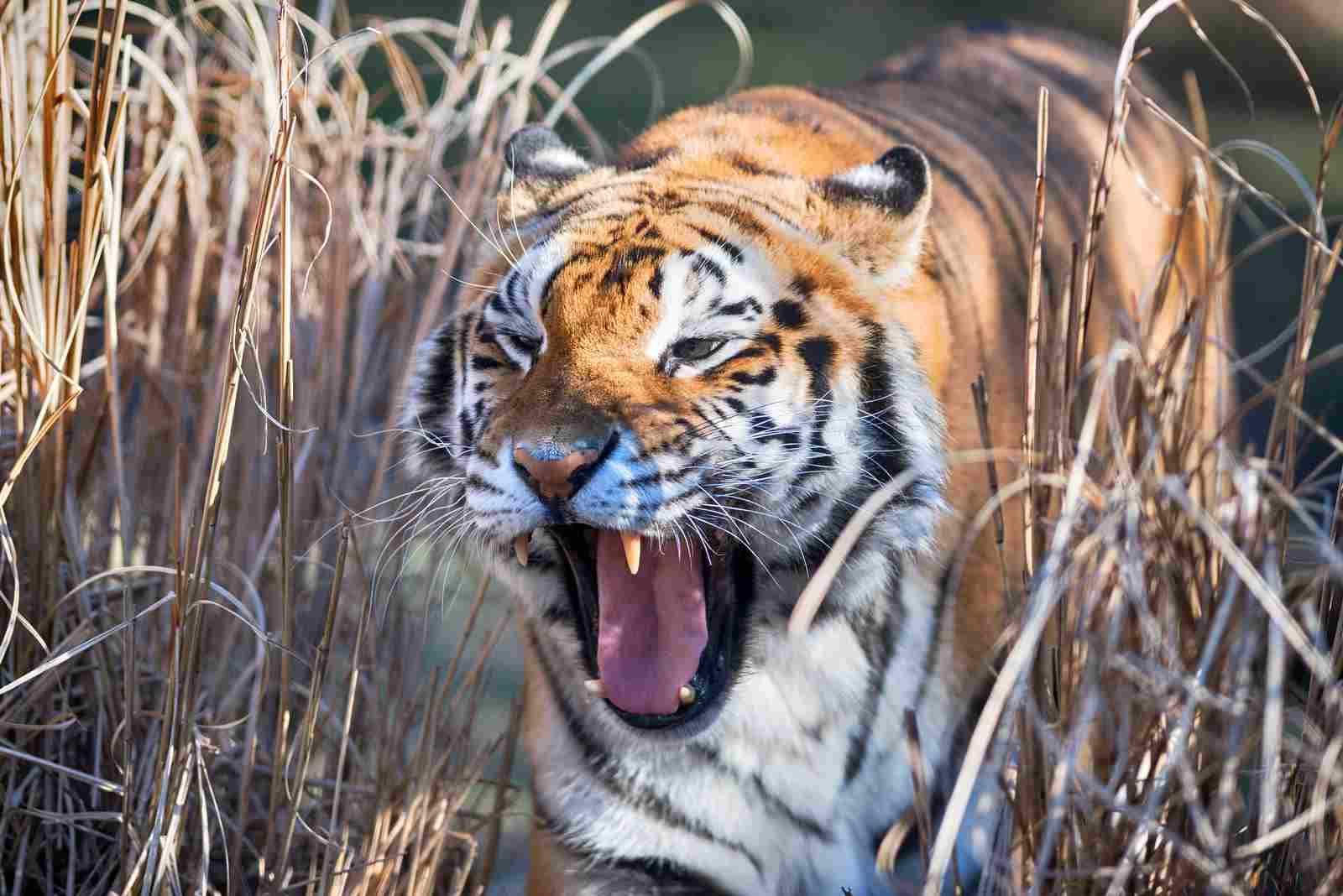
*Ecological Comparison
14). Taxonomic Classification
The taxonomic classification of an animal provides valuable insights into its evolutionary history and relationship with other species. In the case of the polar bear and the tiger, their taxonomic classifications reveal interesting similarities and differences.
The polar bear, scientifically known as Ursus maritimus, belongs to the genus Ursus and the species maritimus. This classification places the polar bear within the family Ursidae, which includes other bear species such as the grizzly bear and the black bear. The polar bear’s taxonomic classification indicates its close evolutionary relationship with these other bear species.
On the other hand, the tiger, scientifically known as Panthera tigris, belongs to the genus Panthera and the species tigris. This classification places the tiger within the family Felidae, which includes other big cat species such as lions, leopards, and jaguars. The tiger’s taxonomic classification highlights its close evolutionary relationship with these other big cat species.
The taxonomic classifications of the polar bear and the tiger reveal that they belong to different families, Ursidae and Felidae, respectively. This implies that despite their similarities in size and predatory behavior, they are not closely related from an evolutionary standpoint.
15). Skin/Coat Texture, Camouflage
When comparing the polar bear and the tiger, their skin and coat characteristics reveal interesting differences in terms of texture, color, and camouflage.
The polar bear’s skin is black, which helps to absorb and retain heat from the sun. This dark coloration is advantageous in the Arctic environment, as it aids in thermoregulation and provides camouflage against the dark background of the sea ice. The polar bear’s coat consists of two layers: a dense undercoat and longer guard hairs. The guard hairs are transparent and hollow, which allows them to trap air and provide insulation. The coat appears white, providing excellent camouflage in the snowy Arctic landscape.
In contrast, the tiger’s skin is orange with black stripes. The unique pattern of stripes on the tiger’s coat serves as camouflage in its natural habitat, such as dense forests and grasslands. The stripes help the tiger blend into its surroundings, making it difficult for prey to detect its presence. The tiger’s coat is short and coarse, providing flexibility and agility during hunting and stalking.
While both the polar bear and the tiger have evolved specific skin and coat adaptations for survival, their textures, colors, and camouflage strategies differ. The polar bear’s white coat allows it to blend into the snowy Arctic environment, while the tiger’s striped coat provides effective camouflage in its forest and grassland habitats.
16). Reproduction
Polar bears are viviparous, meaning they give birth to live young. After mating, the female polar bear undergoes delayed implantation, where the fertilized egg does not immediately attach to the uterine wall. This allows the female to time the birth of her cubs with the availability of food and suitable denning conditions. The gestation period for polar bears is approximately 8 months, during which the female prepares a den in the snow or ice to give birth and protect her cubs.
On the other hand, tigers are also viviparous, giving birth to live young. After mating, the female tiger’s gestation period lasts for about 3 to 4 months. Unlike polar bears, tigers do not undergo delayed implantation. The female tiger typically gives birth to a litter of 2 to 4 cubs, which she raises and protects until they are old enough to venture out on their own.
The differences in reproduction between polar bears and tigers reflect their respective adaptations to their environments. Polar bears, being Arctic dwellers, have longer gestation periods and delayed implantation to ensure the survival of their cubs in the harsh conditions of the Arctic. Tigers, on the other hand, have shorter gestation periods and give birth to multiple cubs, which increases the chances of survival in their forest and grassland habitats.
17). Lifespan
The lifespan of polar bears and tigers can vary depending on their environment and captivity. In the wild, polar bears have an average lifespan of 25 to 30 years. However, some polar bears have been known to live up to 40 years. Tigers, on the other hand, have a slightly shorter lifespan in the wild, averaging around 15 to 20 years. However, there have been reports of tigers living up to 26 years in the wild.
In captivity, both polar bears and tigers have the potential to live longer than their wild counterparts. Captive polar bears have been known to live up to 45 years, while captive tigers have been recorded to live up to 26 years. The longer lifespan in captivity can be attributed to the controlled environment, regular veterinary care, and a consistent food supply.
When comparing the lifespan of polar bears and tigers, it is important to consider the factors that can influence their longevity. Both species face threats in the wild, such as habitat loss, climate change, and poaching, which can impact their lifespan. Additionally, the availability of suitable prey and the overall health of the population can also affect their survival rates.
18). Habitat
Polar bears are primarily found in the Arctic region, inhabiting areas such as the Arctic Ocean, surrounding seas, and coastal regions. They rely on sea ice for hunting seals, their main source of food. The Arctic ecosystem provides the perfect environment for polar bears, with its cold temperatures and abundant marine life.
On the other hand, tigers are found in a variety of habitats across Asia, including forests, grasslands, and mangrove swamps. They are known to inhabit countries such as India, Russia, China, and Indonesia. Tigers are highly adaptable and can thrive in different types of ecosystems, from the snowy forests of Siberia to the dense jungles of India. Their habitat preference depends on the availability of prey and suitable cover for hunting.
When comparing the habitats of polar bears and tigers, it is evident that they have distinct preferences due to their different ecological requirements. Polar bears are specialized for life in the Arctic, where they have evolved to survive in extreme cold conditions and rely on sea ice for hunting. Tigers, on the other hand, have adapted to a range of habitats, utilizing their stealth and agility to hunt in various landscapes.
Understanding the habitat preferences of polar bears and tigers is crucial for their conservation. Both species face threats to their habitats, such as climate change, deforestation, and human encroachment. Protecting and preserving these habitats is essential for ensuring the survival of these magnificent creatures and maintaining the delicate balance of their respective ecosystems.
19). Geographic Range
The geographic range of polar bears and tigers is quite distinct, as they inhabit different regions of the world. Polar bears are primarily found in the Arctic region, which includes the Arctic Ocean, surrounding seas, and coastal areas. They are specifically adapted to survive in the extreme cold temperatures and rely on sea ice for hunting seals, their main source of food. This unique habitat makes the Arctic the exclusive domain of polar bears.
On the other hand, tigers are found in various parts of Asia, including countries such as India, Russia, China, and Indonesia. They inhabit a range of habitats, from forests and grasslands to mangrove swamps.
Tigers are highly adaptable and can thrive in different ecosystems, depending on the availability of prey and suitable cover for hunting. This wide geographic range allows tigers to occupy diverse landscapes, from the snowy forests of Siberia to the dense jungles of India.
Given their distinct geographic ranges, the chances of polar bears and tigers crossing paths in nature are extremely low. The Arctic and the regions where tigers are found are separated by vast distances and different climatic conditions. While both species are top predators in their respective habitats, their paths are unlikely to intersect due to the geographical barriers that separate them.
20). Ecologic Importance
The ecologic importance of both polar bears and tigers cannot be overstated. These magnificent creatures play crucial roles in their respective ecosystems, contributing to the overall balance and health of their habitats.
Polar bears, as apex predators in the Arctic, have a significant impact on the food chain. Their primary prey, seals, helps regulate the population of fish and other marine species. By controlling the seal population, polar bears indirectly influence the entire Arctic ecosystem. Additionally, polar bears’ movements and hunting behaviors help distribute nutrients across the landscape, benefiting other species and promoting biodiversity.
Tigers, on the other hand, are keystone species in their habitats. As top predators, they help control the population of herbivores, such as deer and wild boar. This regulation prevents overgrazing and maintains the balance of plant communities. Tigers also play a crucial role in shaping the structure of forests by influencing the behavior and distribution of their prey. Their presence helps maintain healthy ecosystems and supports the survival of numerous other species.
21). Conservation Status
The conservation status of both polar bears and tigers is a matter of great concern. These magnificent creatures are facing significant threats to their survival, making their conservation efforts crucial.
Polar bears are classified as a “threatened” species by the International Union for Conservation of Nature (IUCN). The primary threat to their population is the loss of sea ice habitat due to climate change. As the Arctic sea ice melts, polar bears are losing their hunting grounds and struggling to find enough food.
Additionally, environmental pollution and oil spills in their habitat further endanger their survival. Conservation efforts focus on reducing greenhouse gas emissions, protecting critical habitats, and promoting sustainable practices to mitigate the impacts of climate change.
Tigers, on the other hand, are classified as an “endangered” species by the IUCN. The main threats to their population include habitat loss, poaching for their body parts, and human-wildlife conflict. Deforestation and fragmentation of their habitats result in a loss of prey and suitable living areas for tigers.
Illegal hunting and trade of tiger parts for traditional medicine and trophies pose a significant threat to their survival. Conservation efforts involve establishing protected areas, implementing anti-poaching measures, and raising awareness about the importance of tiger conservation.
Both polar bears and tigers require immediate and sustained conservation efforts to ensure their long-term survival. Collaborative initiatives involving governments, conservation organizations, and local communities are essential to address the complex challenges they face.
22). Main Threats to Survival
For polar bears, the primary threat to their population is the loss of sea ice habitat due to climate change. As the Arctic sea ice melts at an alarming rate, polar bears are losing their hunting grounds and struggling to find enough food. This loss of habitat directly impacts their ability to hunt seals, their primary prey. Additionally, pollution and oil spills in their habitat further endanger their survival, as they can lead to contamination of their food sources and habitat destruction.
Tigers, on the other hand, face a different set of threats. Habitat loss and fragmentation are major concerns for tiger populations. Deforestation and the conversion of forests into agricultural land or human settlements result in a loss of prey and suitable living areas for tigers.
This loss of habitat also increases the likelihood of human-wildlife conflict, as tigers may come into contact with humans and their livestock. Poaching for their body parts, driven by illegal trade for traditional medicine and trophies, is another significant threat to tiger populations.
To address these threats, conservation efforts for both polar bears and tigers focus on various strategies. These include establishing protected areas, implementing anti-poaching measures, promoting sustainable practices, and raising awareness about the importance of conservation. Collaborative initiatives involving governments, conservation organizations, and local communities are essential for the success of these efforts.
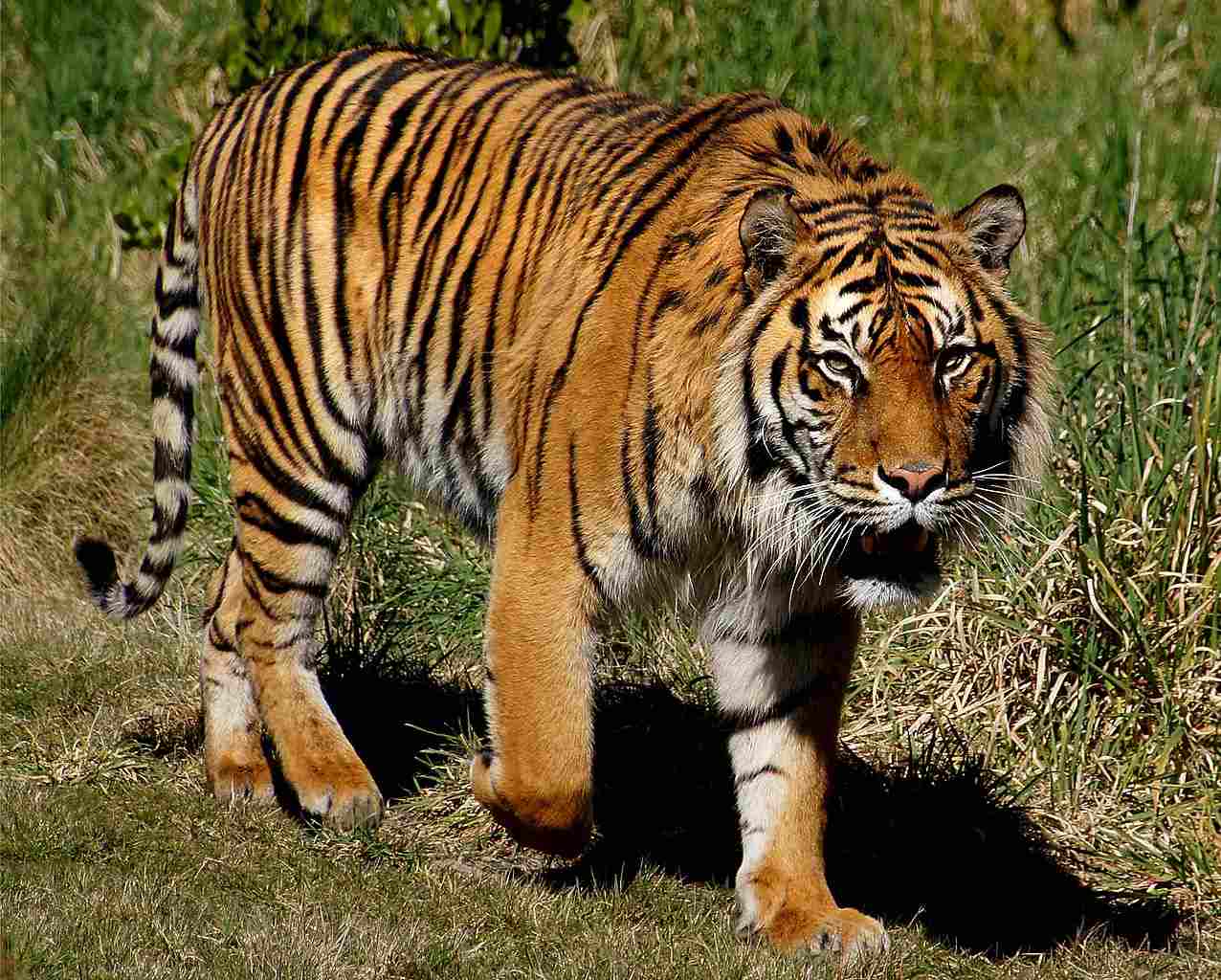
Polar Bear Vs Siberian Tiger Size, Weight, and Ecological Comparison
*Size and Weight Comparison
The size and weight comparison between polar bears and Siberian tigers is an intriguing aspect to explore. When comparing the two, it is clear that polar bears are larger in size and weight. Polar bears can reach lengths of up to 10 feet and weigh between 900 to 1,600 pounds, making them the largest land carnivores.
On the other hand, Siberian tigers are slightly smaller, with lengths of around 9 feet and weighing between 400 to 700 pounds. This significant difference in size and weight plays a crucial role in understanding the dynamics of these two magnificent creatures.
*Bite Force
Polar bears have a higher bite force than Siberian tigers, with estimates ranging from 1,200 to 1,500 pounds per square inch (psi). This allows them to crush the skulls and bones of their prey effortlessly. On the other hand, Siberian tigers have a bite force of around 1,000 psi, which is still formidable. Their powerful jaws enable them to deliver a lethal bite to their prey, ensuring a successful kill. The bite force of these apex predators is a testament to their hunting prowess.
*Speed and Agility Comparison
When comparing the speed and agility of polar bears and Siberian tigers, it is important to consider their different hunting strategies and natural habitats. Polar bears are known for their incredible swimming abilities, allowing them to move swiftly through the water in search of prey. On land, however, their large size and heavy build can limit their agility.
In contrast, Siberian tigers are highly agile and adept at maneuvering through dense forests and grasslands. Their smaller size and muscular build enable them to quickly chase down and capture their prey. Overall, the speed and agility of these apex predators are adapted to their respective environments.
Polar Bear Vs Bengal Tiger
*Size and Weight Comparison
The size and weight comparison between polar bears and Bengal tigers is an intriguing aspect to explore. When it comes to size, polar bears are generally larger than Bengal tigers. Polar bears can reach lengths of up to 10 feet and weigh between 900 to 1,600 pounds, making them the largest land carnivores.
On the other hand, Bengal tigers can grow up to 9 feet in length and weigh between 400 to 600 pounds. Despite their smaller size, Bengal tigers are still formidable predators in their own right. Understanding the differences in size and weight helps us appreciate the unique characteristics of these magnificent animals.
*Bite Force
Both polar bears and Bengal tigers possess impressive bite forces, although that of the polar bear is higher.
Polar bears have a bite force of around 1,200 pounds per square inch (psi), allowing them to crush the skulls and bones of their prey. On the other hand, Bengal tigers have a bite force of approximately 1,050 psi, which is still formidable. This powerful bite force enables them to deliver fatal bites to their prey, ensuring a successful hunt. The bite force of these apex predators showcases their strength and adaptability in their respective habitats.
*Speed and Agility Comparison
When it comes to speed and agility, both the polar bear and the Bengal tiger possess impressive abilities.
The polar bear, despite its massive size, can reach speeds of up to 25 miles per hour on land, allowing it to chase down prey or escape danger. On the other hand, the Bengal tiger is known for its incredible agility, capable of leaping up to 30 feet in a single bound. These remarkable attributes enable both predators to navigate their respective habitats with ease and efficiency. However, in a violent confrontation, speed and agility alone may not determine the outcome.
Conclusion
-Similarities
Firstly, both the polar bear and the tiger are apex predators in their respective habitats. They are at the top of the food chain and play a crucial role in maintaining the balance of their ecosystems. Additionally, both species have evolved to be highly efficient hunters, with sharp claws and powerful jaws that enable them to take down their prey effectively.
Furthermore, both the polar bear and the tiger are known for their incredible strength and agility. They possess muscular bodies that allow them to navigate their environments with ease, whether it be the icy landscapes of the Arctic or the dense forests of Asia.
Moreover, both species have adapted to their surroundings by developing specialized physical features. For instance, the polar bear’s thick layer of blubber provides insulation in freezing temperatures, while the tiger’s striped coat helps it blend into its surroundings for stealthy hunting.
-Differences
When it comes to differences, there are several key distinctions between polar bears and tigers. Firstly, their physical characteristics set them apart. Polar bears are much larger in size compared to tigers, with adult males weighing up to 1,500 pounds, while tigers typically weigh around 500 pounds. Additionally, polar bears have a stockier build and a thick layer of blubber to insulate them in their Arctic habitat, whereas tigers have a more streamlined body adapted for agility in the dense forests.
Another notable difference is their geographic range. Polar bears are found exclusively in the Arctic regions, while tigers inhabit various parts of Asia, including forests, grasslands, and mangrove swamps. This difference in habitat also influences their hunting strategies. Polar bears primarily rely on hunting seals in the water, while tigers are skilled ambush predators, stalking their prey on land.
Furthermore, their behavior and social structure differ. Polar bears are solitary animals, except during mating season and when raising cubs, while tigers are generally solitary but may have overlapping territories with other tigers of the same sex.
-Hypothesis
Based on the physical and behavioral comparisons between polar bears and tigers, it is hypothesized that the polar bear would have the advantage in a violent confrontation between them. The polar bear’s larger size and weight, with adult males weighing up to 1,500 pounds, give it a significant advantage over the tiger, which typically weighs around 500 pounds. Additionally, the polar bear’s stockier build and thick layer of blubber provide it with greater strength and protection.
In terms of hunting strategies, the polar bear’s experience in hunting seals in the water gives it an edge over the tiger’s land-based ambush tactics. The polar bear’s powerful bite force and ability to swim efficiently would likely give it the upper hand in a confrontation.
However, it is important to note that these are hypothetical scenarios and actual outcomes would depend on various factors such as the specific circumstances of the encounter and the individual characteristics of the animals involved. Further research and observation would be necessary to determine the true outcome of a confrontation between a polar bear and a tiger.
